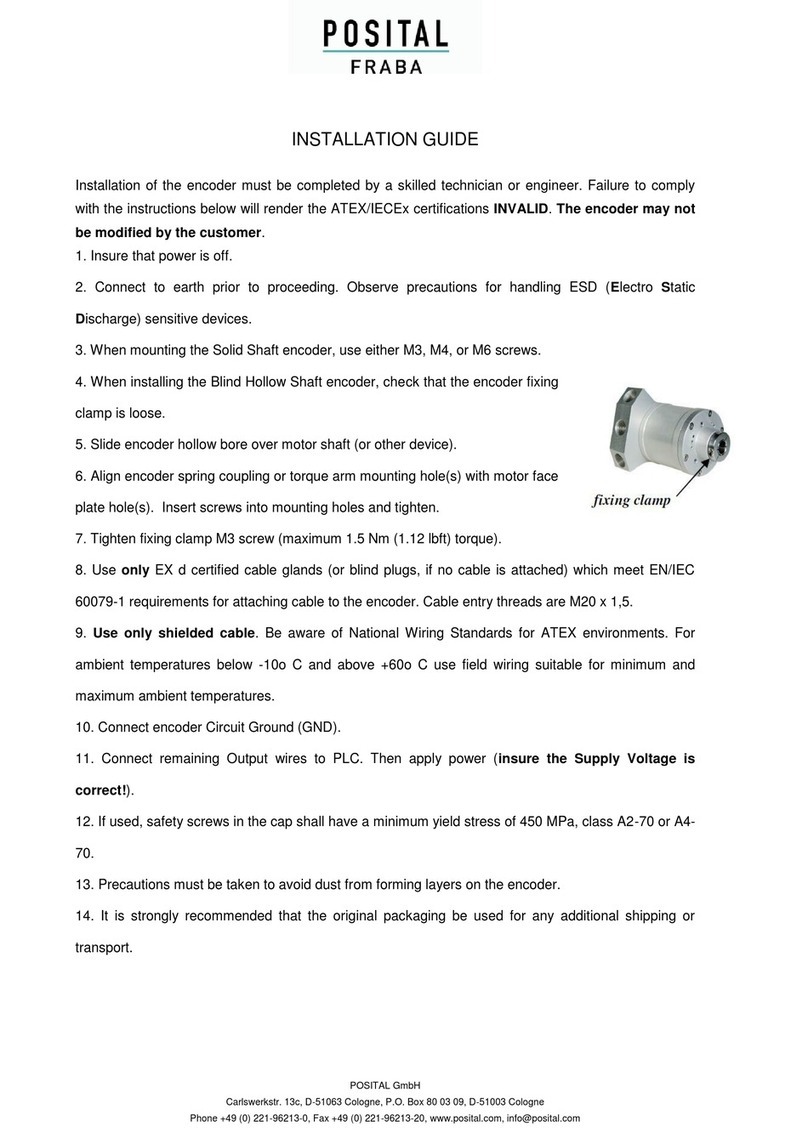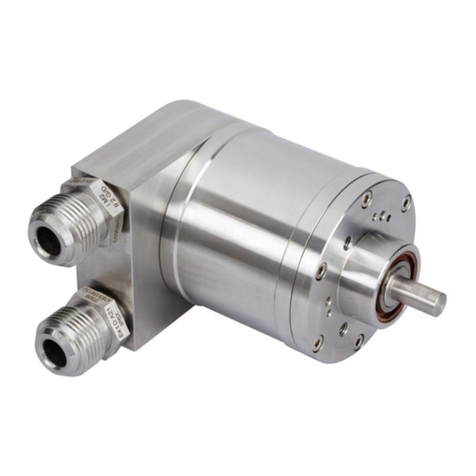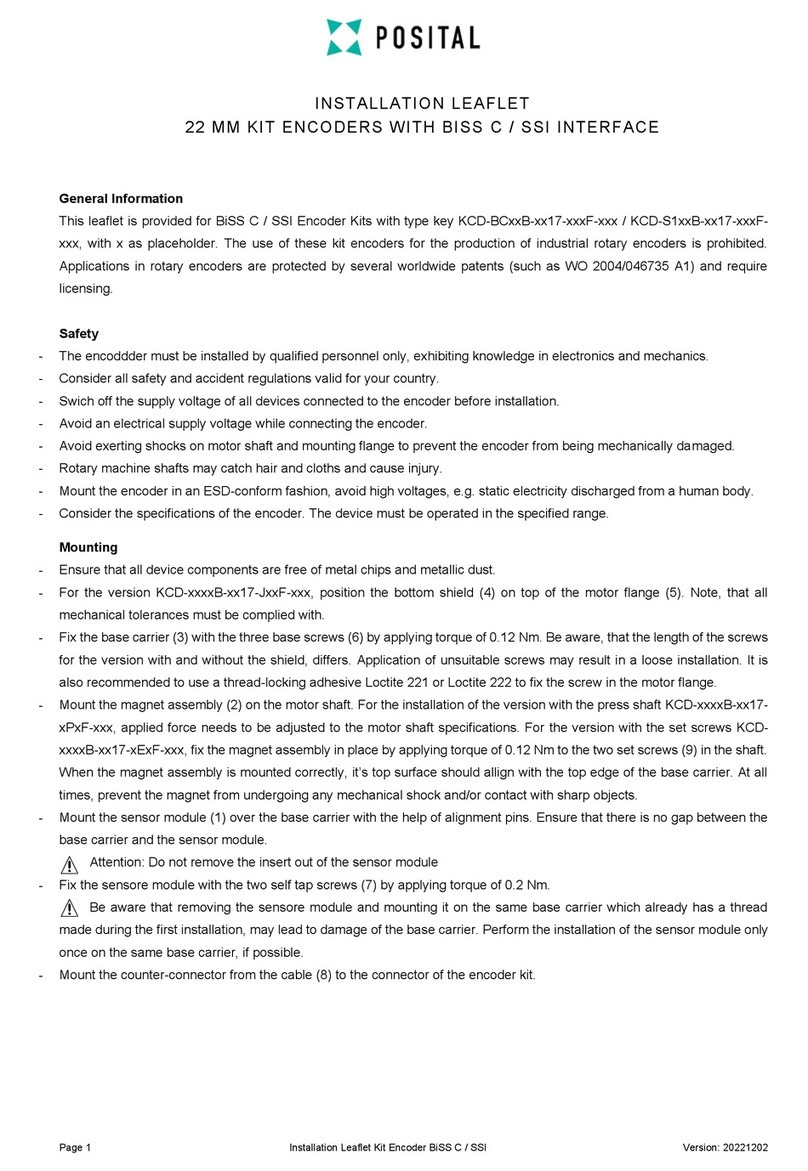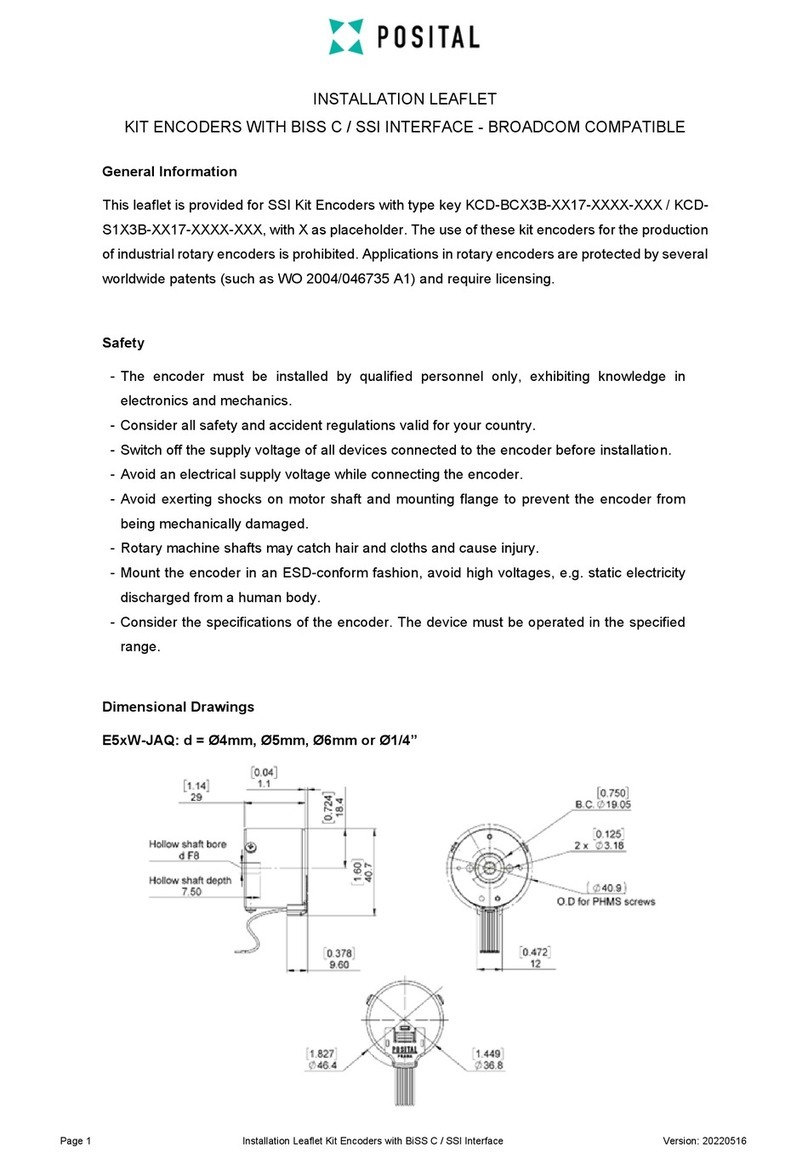Content
Content.............................................................2
1. Introduction .................................................4
1.1 Absolute rotary encoder...........................4
1.2 PROFINET technology ............................5
1.3 Features of the Encoder ..........................5
2. Installation ...................................................6
2.1 Electrical Connection...............................6
2.2 Ethernet cables........................................6
2.2.1 RJ45 –M12 crossed.............................6
2.2.2 RJ45 –M12 straight..............................6
2.2.3 M12 –M12 crossed ..............................6
2.3 Diagnostic LEDs ......................................7
2.4 Status LED indication...............................7
2.5 Instructions for mechanical installation and
electrical connection of the rotary encoder ....8
3. Device configuration...................................9
3.1 Standardization........................................9
3.2 Encoder Classes......................................9
3.3 Encoder functions..................................10
3.4 Signal list for Cyclic Data Transmission.10
3.4.1 Format of actual position values .........11
3.4.2 Encoder control word (STW2_ENC)...12
3.4.3 Encoder status word (ZSW2_ENC) ....12
3.4.4 Encoder control word (G1_STW)........13
3.4.5 Encoder status word (G1_ZSW).........13
3.5 Standard telegrams................................14
3.6 Configuration principle...........................15
3.7 Rotary encoder functionality overview ...15
3.8 Rotary encoder functions –data format .15
3.8.1 Base Mode Parameter ........................16
3.8.2 Device Parameter ...............................16
3.8.3 Vendor Parameter...............................16
3.9 Rotary encoder function description.......19
3.9 Rotary encoder function description.......19
3.9.1 Code sequence...................................19
3.9.2 Class 4 functionality ............................20
3.9.3 Preset control for G1_XIST1...............20
3.9.4 Scaling function control.......................20
3.9.5 Alarm channel control .........................20
3.9.6 Preset value........................................21
3.9.7 Offset value.........................................22
3.9.8 Scaling parameters .............................22
3.9.9 Max. Master Sign-Of-Life failures........22
3.9.10 Velocity measuring units ...................22
3.9.11 Velocity filter......................................23
3.9.12 Endless Shaft (RoundAxis) ...............23
4. Configuring with STEP7............................24
4.1 Installing the GSDML file........................24
4.2 Engineering a POSITAL encoder into a
STEP7 project..............................................25
4.3 LLDP (Link Layer Discovery Protocol) ...27
4.4 Selecting an encoder version.................29
4.4 Setting encoder parameters...................30
4.5 Changing and reading encoder
parameters at run-time.................................30
4.6 Setting of device properties....................31
4.7 Sample of Variable table........................32
4.8 IRT settings............................................33































